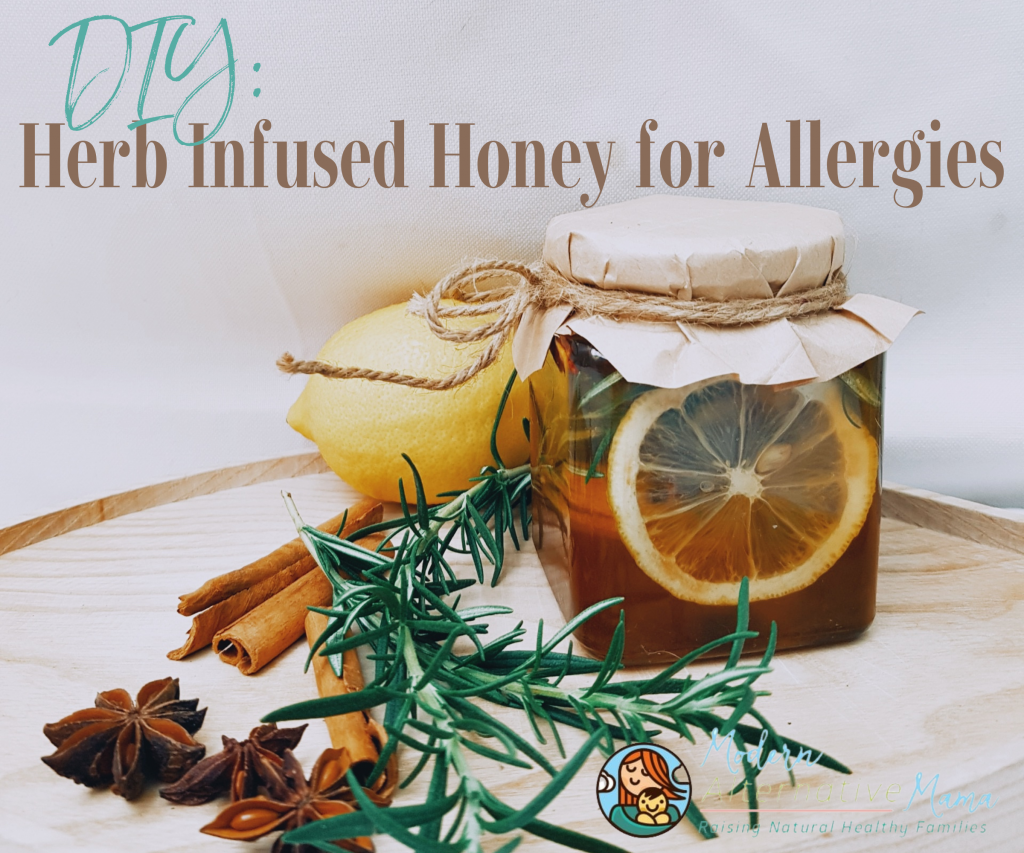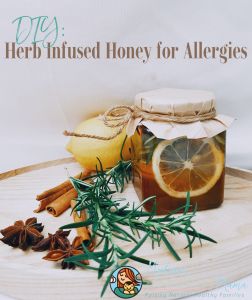Written by Beth and Rustina
While many of us are joyfully skipping our way into spring, others are hunkering down for the discomfort of allergy season. However, there is a lot you can do that can ease and stop the discomforts before they even get going in full swing. One of my favorite ways to do this is honey. What’s even better than plain raw honey? Herbal-infused raw honey, of course!
If you’ve read Earthley’s Guide to Seasonal Allergies, you know symptoms of allergy season include:
- Runny nose
- Watery, red eyes
- Wheezing
- Coughing
- Sneezing
- Drainage
- And all around feeling miserable
So What Are You To Do?
Of course, Earthley’s Sinus Saver is a must, but you can also partake in the honey and herbs! Consuming small amounts of raw honey may build up your tolerance to local flower pollen by reducing your reaction to it. This has long been a passed-down pearl of wisdom, and many people swear by it. Very few studies have shown a short-term response but indicate long-term use may be more beneficial (1,2).
What Herbs to Use
Honey is a great choice with its antibacterial, antimicrobial, and anti-inflammatory properties; it even soothes the throat.
Ginger is anti-inflammatory, warming, and soothing.
Rosemary is anti-inflammatory and antihistamine.
Sage is antibacterial, helps with coughs, antinociceptive (pain relieving), and anti-inflammatory.
Nettle is anti-inflammatory and helps relieve itching, sneezing, and runny noses.
Garlic is antibacterial, anti-inflammatory, and very helpful for colds and allergies.
Lemon is more than just a yummy flavor; it also brings vitamin C and antioxidants to help.
Goldenrod is a drying herb that helps with congestion caused by colds, allergies, or sinus infections.
Echinacea supports the immune system and is an antihistamine.
Mullein helps support mucous membranes and reduce congestion. It is especially helpful with coughs from that “ticklish” feeling.
There are so many more options, too!
Some are more beneficial for allergy symptoms, such as sage for coughing, while others, like lemon, are more for flavor. Try different combinations and find out what works best for you. The honey can be eaten or used in meals or drinks for flavor.
Seasonal Allergy Honey
Ingredients:
- 1 cup of local, raw honey (If you don’t have local, try this one)
- 2 inches of chopped ginger
- 1 tsp. of rosemary
- 1 tbsp. of goldenrod
- 2 cloves of garlic
- 1 lemon, squeezed for the juice
Method 1 Directions:
Method 1 is time-consuming. Not so much of your own time, but more so a waiting game. The benefits, however, come from the fact that it is not heated. You can keep all the good stuff intact by not heating the honey.
Step 1: Place honey and herbs in a jar.
Step 2: Seal with lid and shake.
Step 3: Let sit for 2-3 weeks. (Yes, it really is that simple!)
Step 4: If you see the herbs not really meshing with the honey and instead sitting on the top, just give it another good shake and keep waiting.
Method 2 Directions:
But wait, you don’t have a few weeks to wait around? You can infuse your herbs and honey in a double boiler. However, you should remember that heating honey can remove some of its medicinal properties.
Step 1: Place honey and herbs in the double boiler’s top pot/bowl/jar. The herbs can go in reusable tea bags if you have them (if not, just place them in the honey).
Step 2: Heat on medium-low for 10-15 minutes, stirring as needed.
Step 3: Strain the herbs through cheesecloth/washcloth or lift out the tea bags, squeezing out the excess honey from the herbs.
Step 4: Place your honey in a jar and use it as you need.
Note: Honey is not recommended for children under 1 year of age. However, some feel that babies can eat honey (sometimes).
Disclaimer: This post is not intended as medical advice. These statements have not been evaluated by the FDA, and nothing in this post is intended to diagnose, treat, or cure anything. If you have questions, please do your own research or seek advice from a health professional.








[…] Allergy Season: Herb Infused Honey […]
Hi! I am loving all your herbal recipes, but I have a question. When making the herbal-infused honey, how much honey and how much herbs? I use local raw honey so I know that already has allergy properties in it…but want to make something that covers more than just local pollen. My daughter and I are allergic to house dust, grass, and a few other things in daily life…want to make something we can use that will help with this. Thank you so much!
[…] Used For Your Health: Modern Alternative Health “Allergy Season: Herb Infused Honey” Some Call It Natural “Dad’s Cough and Bronchial Concoction” Studio […]
[…] Article Sources By modernalternativemama.com […]
I am using Raw Honey 2 tbs and Ginger liquid, very powerful to treat cough and relief the sinus.